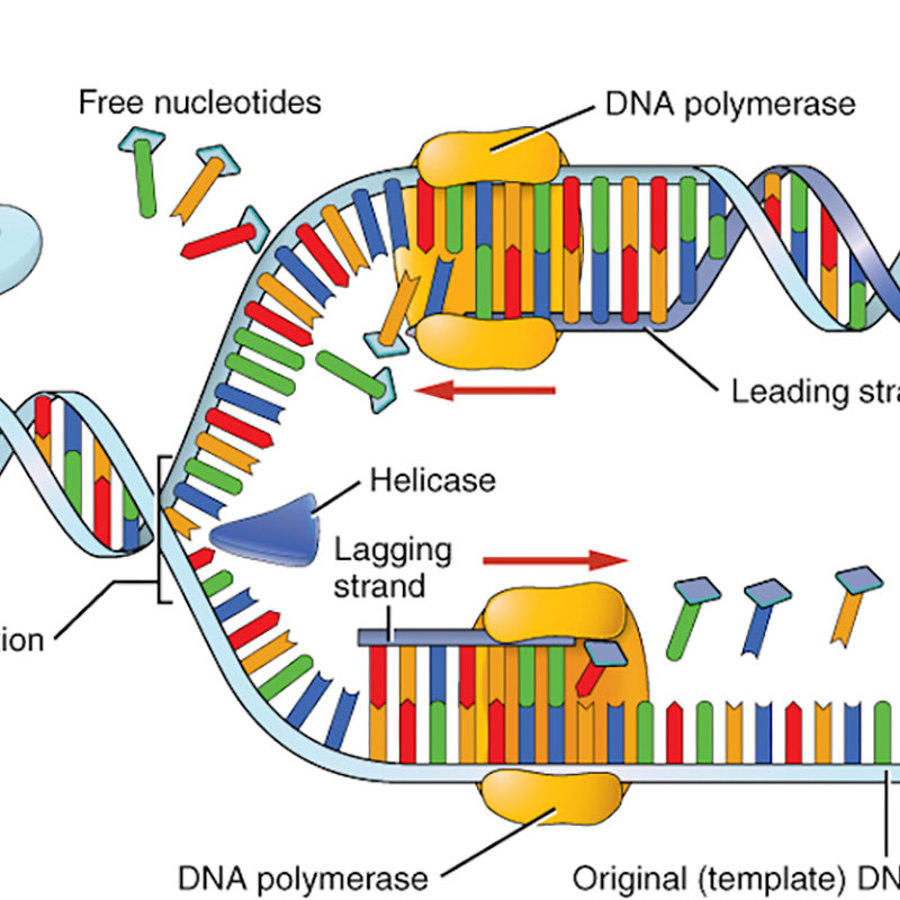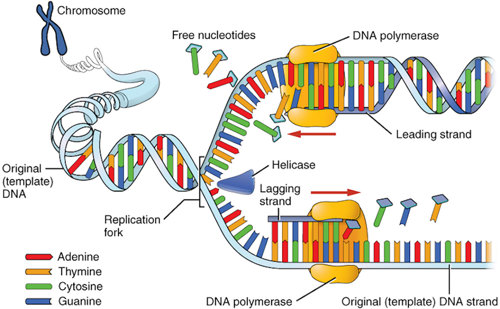
How does DNA replicate itself?
June 14, 2004

- Related Topics:
- DNA basics,
- Common questions,
- Molecular biology
A middle school student from Michigan asks:
“How does DNA replicate itself?”
Cells need to copy their DNA when they divide. This process is called DNA replication. To understand how DNA is copied, we first need to understand the structure of DNA.
DNA is made of two long strands that wrap around each other to make the famous double helix. Each strand is composed of a sequence of molecules called nucleotides. Bases are a part of the nucleotides.
There are four possible bases, A, C, T and G. The bases of one strand pair up with the bases of the other strand in a very simple way called the base-pairing rule. C pairs up with G and A pairs up with T. What this means is that the DNA sequence of one strand completely defines the DNA sequence of the other strand.
Because of how the bases pair up, the two strands come together like a molecular zipper. During replication, the strands are unzipped and each is copied following the base-pairing rule.
So if there is an A, when you make the copy, you should put in a T and vice versa. The same holds true for G and C. When replication is complete, each new DNA contains one old and one new strand or one parental and one daughter strand.
Sounds easy, doesn’t it? Once you get into the nuts and bolts of replication, this simple idea becomes complicated in a hurry.

Every step of DNA replication needs special molecules to do the work. These molecules are called enzymes. As we go through this, remember, all that is happening is the DNA is being unzipped and each side of the zipper is being copied.
The first step in DNA replication is to separate or unzip the two strands of the double helix. The enzyme in charge of this is called a helicase (because it unwinds the helix). The point where the double helix is opened up and the DNA is copied is called a replication fork.
Once the strands are separated, an enzyme called DNA polymerase copies each strand using the base-pairing rule. The two strands are not exactly copied the same way.
Because a polymerase can only work along the strand in one direction (5' to 3'), it uses a slightly different strategy to copy the DNA on each strand: the leading and lagging strand.
DNA polymerases are not doing all this on their own. Many more enzymes help out. For example, there are some enzymes that stitch up the newly made strands. Some enzymes prime the DNA so that the polymerases can start copying; other enzymes remove those priming sites and replace them with proper DNA.
So this is how DNA replication works. It is made possible by the beautiful symmetry of DNA found in all living organisms.

Author: Sophie Candille
When this answer was published in 2004, Sophie was a Ph.D. candidate in the Department of Genetics, studying the genetics of pigmentation in dogs in Greg Barsh’s laboratory. Sophie wrote this answer while participating in the Stanford at The Tech program.
 Skip Navigation
Skip Navigation
